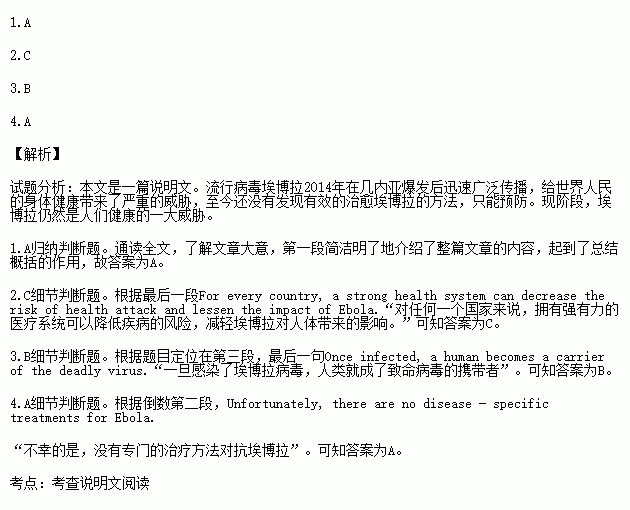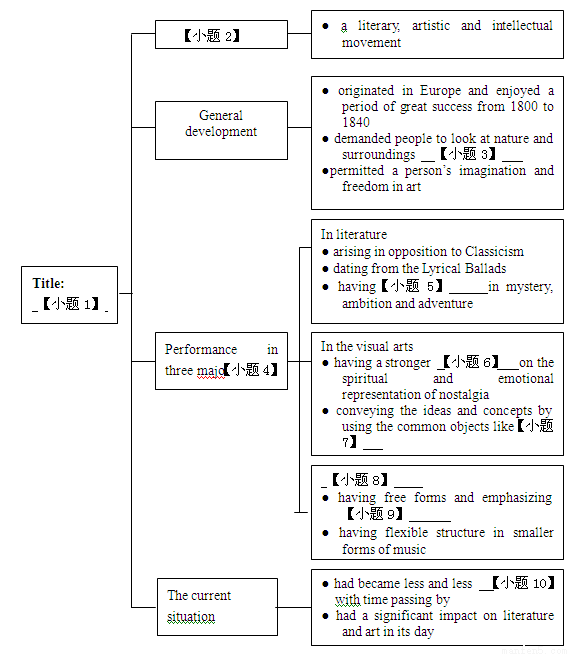题目内容
2014 saw that the Ebola virus reappeared in Guinea and soon spread into neighbouring Liberia and Sierra Leone, killing over 7,800 people by the new year of 2015. It leads to viral hemorrhagic fever, which is characterized by high fever and internal bleeding etc.
Ebola is named after the Ebola River, where it was first discovered in 1976. There are five different types of the Ebola virus, each named after where they first happened: Sudan, Ivory Coast, Reston, Bundibugyo, and Zaire. The deadliest of the five, Zaire, was responsible for the 2012 out- break, and is believed to be attacking Guinea.
Ebola is naturally found in fruit bats, which pass on the virus to other animals by biting or sucking on their blood. Humans who are suffering from the Ebola infection might have touched the bodily fluids of the infected animals. Once infected, a human becomes a carrier of the deadly virus.
Unfortunately, there are no disease - specific treatments for Ebola. Health - care workers only supply the infected people with physiological saline(生理盐水)to keep them in good condition. Ebola can kill 90% of those infected, especially in underdeveloped societies like those in Africa. Since there have been many cases of nurses catching the disease from patients, they are forced to wear strict protective clothes, and in some cases, not even allowed to get close to the infected. The fact that there is no cure for the Ebola virus is what makes the outbreak a challenging one to control.
What’s worse, since we live in an interconnected world, where the situation in one country can affect us all, the influences of Ebola are huge: damaging trade relations, affecting foreign visitors, and weakening entire countries. It is feared that the disease may spread throughout west African countries. For every country, a strong health system can decrease the risk of health attack and lessen the impact of Ebola.
1.What is the function of the first paragraph in the whole passage?
A. To arouse the reader’s concern.
B. To summarize the whole passage.
C. To give a detailed description of Ebola.
D. To introduce the theme of the whole passage.
2.What can we infer about the Ebola virus?
A. It has caused a panic in many countries.
B. It is the most dangerous virus in the world.
C. A strong health system is important to fight against Ebola.
D. Anyone who was infected Ebola will die.
3.Paragraph 3 mainly tells us _________.
A. What the Ebola virus is
B. How the Ebola virus spreads
C. How the Ebola virus is treated
D. How the Ebola virus affects the life
4.Which of the following is true?
A. There are no effective drugs to treat Ebola by far.
B. Ebola is now very common in Guinea.
C. Those with a fever must be infected by Ebola.
D. Females are easier to be infected by Ebola.
 课堂全解字词句段篇章系列答案
课堂全解字词句段篇章系列答案 步步高口算题卡系列答案
步步高口算题卡系列答案

